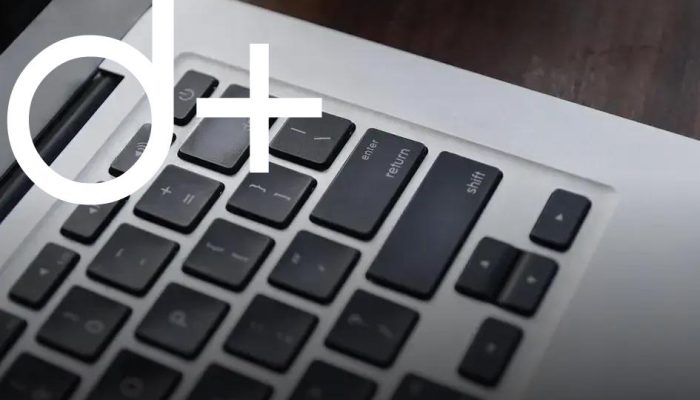Curious about how to start mining cryptocurrency in 2025? This guide will walk you through the essentials. Whether you’re a beginner or have some experience, understanding the mining basics and choosing the right tools are crucial. As technology evolves, staying informed is key to success. Embrace the crypto revolution and start mining efficiently with the best strategies and tools available. Let’s delve into each step to ensure you begin your cryptocurrency mining journey on solid ground.
Understanding Cryptocurrency Mining Basics
Cryptocurrency mining is the process by which new coins are introduced into the existing circulating supply, a process integral to the decentralized economy behind digital currencies. Understanding this process is essential for anyone considering diving into the mining world come 2025.
At its core, mining involves solving complex mathematical puzzles, a task performed by powerful computers. This process not only helps verify transactions on a blockchain but also ensures the network’s security. Through solving these puzzles and adding verified transaction data to blocks, miners contribute to the overall network integrity.
The most widely acknowledged a mining algorithm is known as Proof of Work (PoW). In this methodology, miners compete to solve problems, with the first one to succeed receiving a reward. This competition demands significant computational power and electricity, underscoring the importance of efficient mining equipment and energy sources.
A good understanding of the blockchain technology underpinning cryptocurrency is also crucial. It is a distributed ledger maintained by a network of computers, or nodes, that ensures transparency and immutability of all logged transactions. Each successful block mined is added to this chain, securing the network against tampering.
While focusing on mining, one must also understand the economic dynamics involved, such as the halving events. These events lead to a decrease in the rewards given to miners, influencing the profitability of mining activities. As 2025 approaches, staying informed about such events and their repercussions is essential.
Additionally, regulatory aspects cannot be overlooked. Governments worldwide are taking a keen interest in cryptocurrencies, leading to evolving legal frameworks. This can have direct impacts on the viability and legal standing of mining operations.
As the methods of mining evolve, strategies such as pool mining and cloud mining become more attractive. These methods allow miners to pool resources and increase the chances of solving a block puzzle together, thus sharing the potential rewards.
Understanding the basics of cryptocurrency mining sets the foundation for making informed decisions in this rapidly changing landscape, preparing miners to make the most of their efforts in the years to come.
Choosing the Right Mining Hardware

When it comes to choosing the right mining hardware, several factors are crucial. The type of cryptocurrency you intend to mine will significantly influence your choice. Different algorithms demand varying levels of processing power, memory, and efficiency, which affects hardware selection.
In general, there are three main categories of mining hardware: ASICs, GPUs, and CPUs. Each type caters to different mining needs.
ASIC Miners
ASIC (Application-Specific Integrated Circuit) miners are designed specifically for mining a particular cryptocurrency. They offer high performance and efficiency for their designated algorithms, making them very popular in the mining community. However, they’re less flexible, as they can’t be repurposed for other cryptocurrencies once purchased for a specific one.
GPU Miners
GPU (Graphics Processing Unit) miners are more versatile than ASICs. They’re general-purpose devices that can handle a variety of cryptocurrencies. This adaptability means you can switch between mining different coins, depending on market conditions and profitability. GPUs generally require more cooling and power supply, but they might be the best choice if flexibility is important for you.
CPU Miners
CPU (Central Processing Unit) miners were among the first hardware used in cryptocurrency mining. Although largely outdated for most large-scale operations, CPU mining can still be effective for certain new or less popular cryptocurrencies. They provide an entry point for beginners due to their low cost; however, they lack the efficiency and speed of ASICs and GPUs.
When deciding on mining hardware, consider the initial cost, expected profitability, and the energy efficiency of the device. Ensure your setup aligns with your budget and operational goals to maximize returns. Remember to also assess the competitive landscape, as mining difficulty and hardware capabilities constantly evolve.
Selecting the Best Mining Software
In the process of mining cryptocurrency, choosing the right software is crucial for optimizing output and ensuring efficiency. Several factors need consideration when selecting mining software. Compatibility with your hardware and operating system is a fundamental factor to evaluate. Some software is specifically tailored for certain types of hardware, such as ASICs or GPUs, while others can work across multiple platforms.
Usability and Interface: Opting for software with a user-friendly interface can make the mining process less complicated. Beginners would benefit from software that provides easy-to-navigate dashboards with clear metrics and troubleshooting support. Advanced users might prefer software that allows custom configuration and detailed performance tracking.
Features and Updates: Regular updates in mining software help in addressing security issues and improving functionality. Features like remote management, auto-switching for different cryptocurrencies, and overclocking support can provide added advantages.
Security and Support: Ensure that the software provides adequate security measures, including encryptions and protection against malware attacks. Active community support and developer backing are crucial for troubleshooting any issues you might encounter during mining operations.
Energy Consumption and Cost Analysis

Mining cryptocurrency involves significant energy consumption, a factor that substantially affects the profitability of your ventures. Whether you run a small operation at home or a large-scale mining farm, understanding how energy usage impacts your bottom line is crucial. As the
digital currency landscape
evolves, efficiency remains a top priority for miners.
- Power Usage and Efficiency: ASIC miners and GPUs vary in terms of energy efficiency. Always assess the power consumption ratings of your equipment before purchase. Lower energy usage can directly translate to reduced costs over time.
- Cost Management: Monitoring your electricity costs is essential. Consider the local cost of electricity and look for areas with surplus renewable energy resources that offer cheaper rates.
- Technological Advancements: As we look towards 2025, new technologies and approaches to mining, like green energy solutions and more efficient mining algorithms, could help reduce both costs and environmental impact.
By continuously analyzing the impact of energy on your operations, you can improve your strategies and optimize your crypto mining activities for better performance and sustainability in the coming years.
Future Trends in Cryptocurrency Mining
As we look to 2025, cryptocurrency mining is expected to evolve significantly. One major trend is the shift towards sustainable mining practices. As energy consumption remains a critical issue, there is growing interest in renewable energy sources. Miners are exploring locations with abundant renewable resources, like solar and wind power, to reduce carbon footprints and energy costs.
Another trend is the development of more efficient mining hardware. Manufacturers are constantly working on chips that boast higher hash rates with lower energy consumption. This means that newer mining rigs will likely outperform older models in both efficiency and cost-effectiveness.
Moreover, the integration of artificial intelligence and machine learning in mining processes is set to change how operations are conducted. AI can optimize mining protocols, predict market trends, and manage energy usage more effectively.
Lastly, regulations are expected to tighten around the world. As governments strive to manage the environmental impact, we may see new policies that affect mining operations. Understanding these regulations will be crucial for miners wanting to remain compliant and operational in 2025.







![BANNER 1 - HOME [QUADRADO]](https://dailyfindinvestment.com/wp-content/uploads/2025/01/BANNER-300-X-300.gif)
